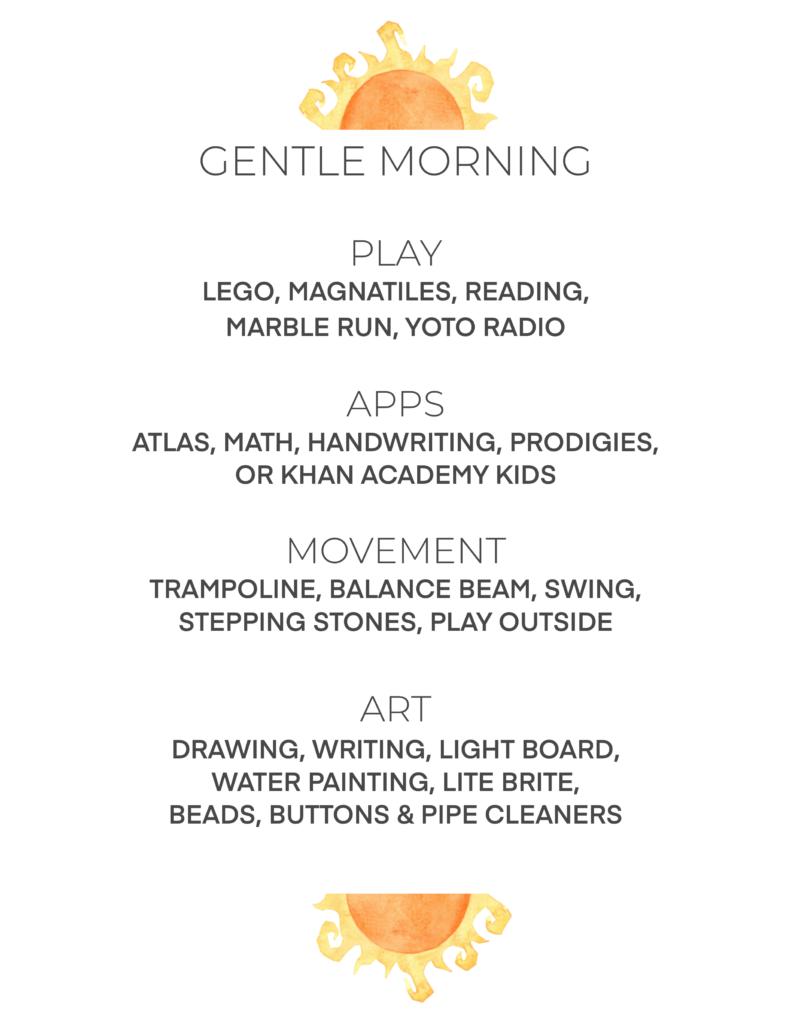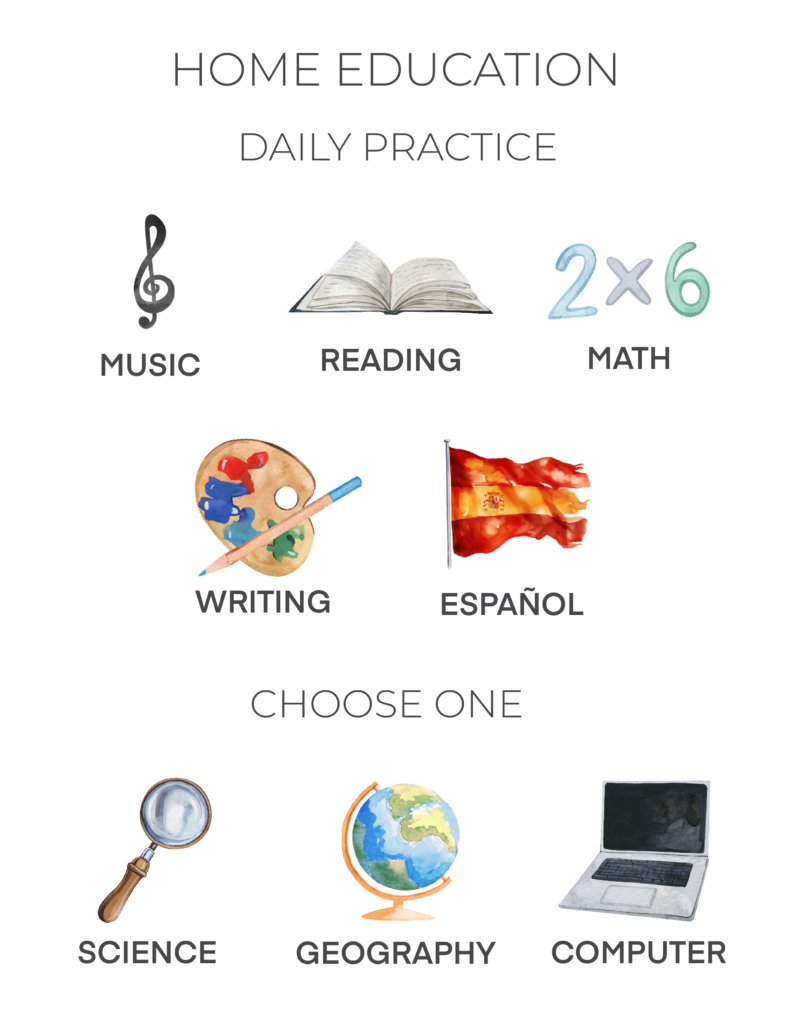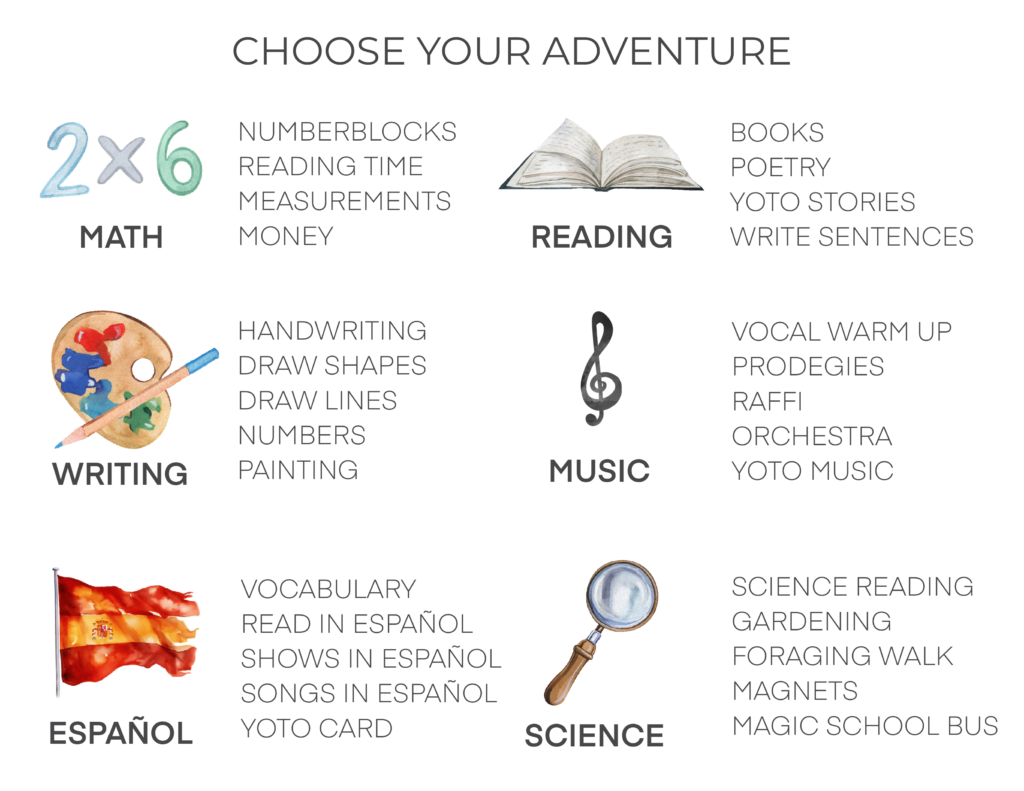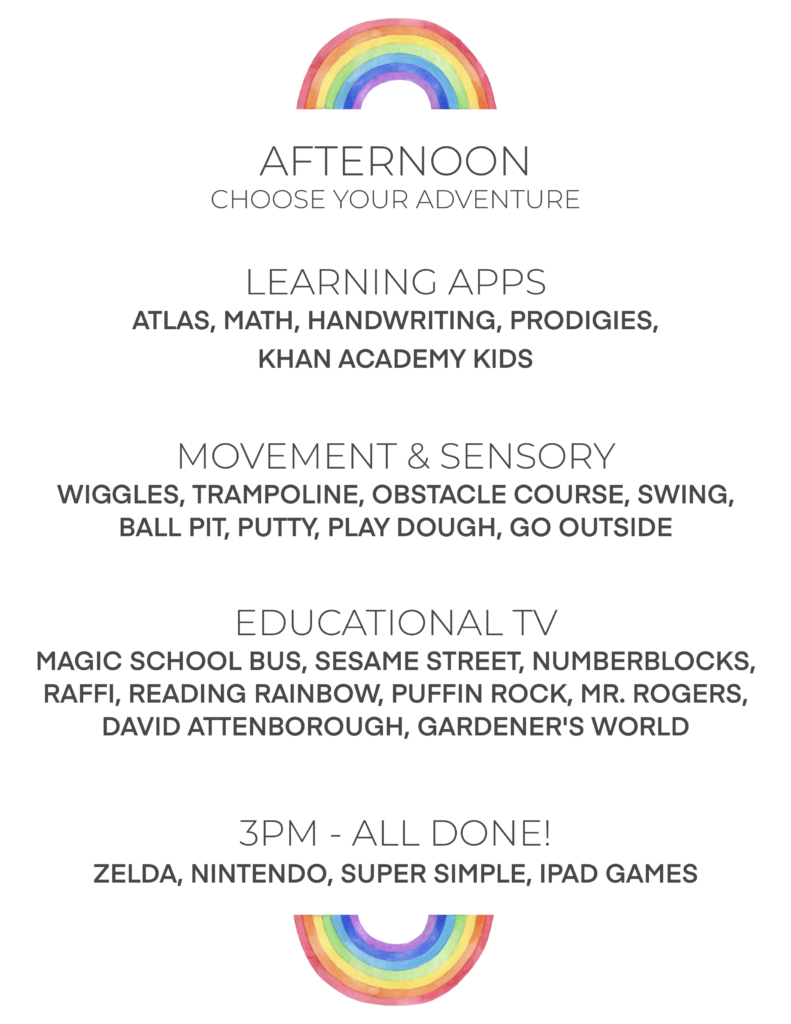I’ve spent a lot of creative energy on a home education rhythm that provides freedom within structure and so I thought I’d document it here.
DISCLAIMER: Please don’t read this post as a how to. I’m not making any suggestions or judgements for families who do things differently. Every child has their own needs and there are endless ways to home educate. This is what works for us. For now. It may change tomorrow.
Here’s a peek at our daily rhythms (watercolor clip art from Etsy).
Gentle Morning
This list is specifically curated to be things David can do after breakfast without my help. These suggestions are relatively quiet and not overstimulating as I do my morning journaling and write in my journal. Five years into parenting and I’m finally back to Julia Cameron’s morning pages.

David is an early reader so these lists work well for us. At earlier ages I used a lot more pictures. He’s not limited to this list, but it can provide a reminder of what’s possible. After the holidays he spent hours sorting sequins and buttons. It was clearly very regulating and creatively fulfilling activity. He’s only just circled back to LEGO.
Starting the Day
Sometime mid morning we’ll find our way to the proper “school” activities. Just as he is learning to respect my work (he calls my morning journaling my “handwriting”) I respect the work he is doing. Whether it is playing with LEGO or “making an invention.” We don’t start our day by the clock.
When a child is focused on a work it is important to them.
In the case of an autistic child it may also be fulfilling complex needs that are not immediately obvious.
(It’s me. I was the autistic child who’s now an autistic parent.)
Instead of suppressing neurodivergent instincts to move, to stim, to dance, to echo, to hyperfocus…
What if we really listened to our own bodies & capacities?
What if we trusted ourselves & our kids more?
Self advocacy means having autonomy to meet your own needs and pursue your own interests. That means our days are flexible and play blends into learning.
To be clear (because someone always says it) this doesn’t mean David does “what he wants” all day long.
Following the child doesn’t mean complete anarchy.
Stay with me.
Freedom within Structure
The central tenant of our home education practice is freedom within structure.
We have certain types of schoolwork that we do each day.
Within that framework David has a lot of freedom.
What emerges is a natural ebb and flow to the day. Periods of concentration and then self regulation. Handwriting then jumping on the trampoline. Math then LEGO.
I don’t mean to suggest that it’s always easy. But when we find our rhythm and everyone is well regulated there is an ease to our day.

This semester we’ve shifted Music and Español to daily (instead of weekly). I also added computer because it’s required for testing and we’re preparing for that. But we won’t be doing that every day.
Art isn’t on the list because mark making (writing and drawing) are seen as the same thing for right now. Some days we draw letters. Some days we draw numbers. Some days we draw shapes. One day for “handwriting” we drew these nested rainbow hearts together. Parallel play is a really powerful support tool.

The Power of Choice
Another opportunity for choice is how we do math or reading or handwriting. I made this list so David can choose between a handful of ways to engage with each subject.

We’re still finding our cadence with this. There are enough options we can mix things up by choosing something new each day. Or avoid repeating what we did yesterday. Our list is laminated so we can keep track.
I believe this approach (freedom within structure) encourages self directed learning that can continue throughout life. Education should kindle our interests and curiosity.
My own home education was similar. My mom was very hands on in elementary, but as I got older I was completely self directed. And I just never stopped learning. I wasn’t doing it because I had to. I was doing it because I love to learn. By the time I got to university my professors just laughed because I took electives that “didn’t count for anything.” 😂
After Lunch
We also have an afternoon list of activities he can do any time after lunch. These are often sensory reset breaks between the more structured “school work” above.

The goal is to be completely done with schoolwork before 3pm. That’s the time of day David is allowed to play Zelda (otherwise he would choose Zelda 24/7). Right now that is proving a strong enough motivation for him to persevere on the tough days.
This is how we’re navigating the tension of structure and freedom. But there’s a lot more to how we home educate. Sensory supports, field trips, gardening, baking, nature walks.
I’ve created a landing page for home education that you can browse here.
Or take a peek at our home brew curriculum.

